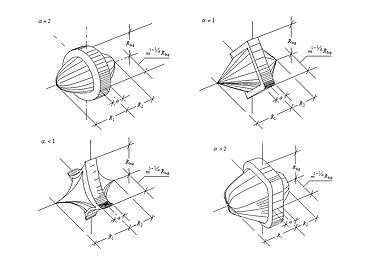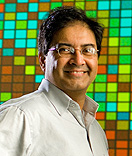News
Converting ‘junk’ energy into useful power

When “designer” particles like these are placed next to one another, the way mechanical energy travels through them is profoundly affected, according to new research. Photo: SURAJIT SEN
A UB-led research team has developed a mathematical framework that could one day form the basis of technologies that turn road vibrations, airport runway noise and other “junk” energy into useful power.
The concept all begins with a granular system comprising a chain of equal-sized particles—spheres, for instance—that touch one another.
In a paper published last month in Physical Review E, UB theoretical physicist Surajit Sen and colleagues describe how altering the shape of grain-to-grain contact areas between the particles dramatically changes how energy propagates through the system.
Under “normal” circumstances, when the particles are perfect spheres, exerting force on the first sphere in the chain causes energy to travel through the spheres as a compact bundle of energy between 3-to-5-particle-diameters wide at a rate set by Hertz’s Law.
But Sen and his collaborators have discovered that by altering the shape of the surface area of each particle where it presses against the next, it is possible to change how the energy moves. While this finding is yet to be demonstrated experimentally, Sen says that “mathematically, it’s correct. We have proven it.”
“What this work means is that by tweaking force propagation from one grain to another, we can potentially channel energy in controllable ways, which includes slowing down how energy moves, varying the space across which it moves and potentially even holding some of it down,” says Sen, professor of physics whose partners on the project include former graduate student Diankang Sun, now of New Mexico Resonance in Albuquerque, and Chiara Daraio, a professor at the California Institute of Technology.
“What we have managed to accomplish is we have broadened Hertz’s theory with some extremely simple modifications,” Sen says. “If I hit one end of the chain of particles, the perturbation will travel as an energy bundle. Now we can tune and control that energy.” This modification to Heinrich Hertz’s theory comes 130 years after Hertz’s work was published, Sen adds.
While the Physical Review E paper describes a granular, mechanical system, Sen believes the mathematical framework his team developed could be realized using electrical circuit systems as well. One practical application he foresees from such technology: “We could have chips that take energy from road vibrations, runway noise from airports—energy that we are not able to make use of very well—and convert it into pulses, packets of electrical energy, that become useful power.
“You give me noise,” Sen says, “I give you organized bundles.”
The study was supported by the Army Research Office and National Science Foundation.


Reader Comments